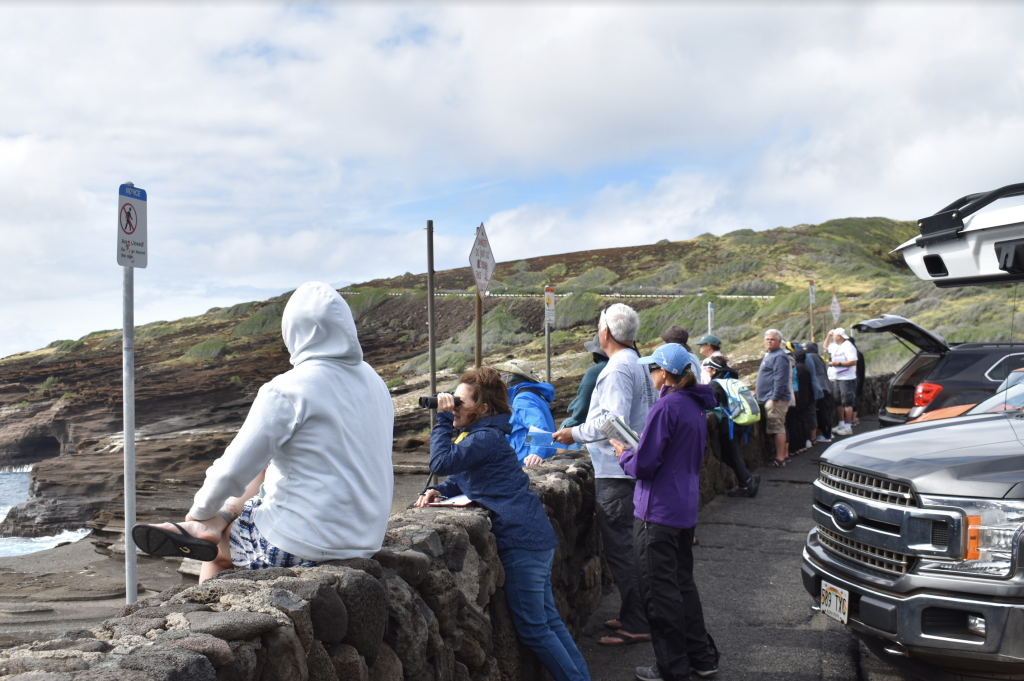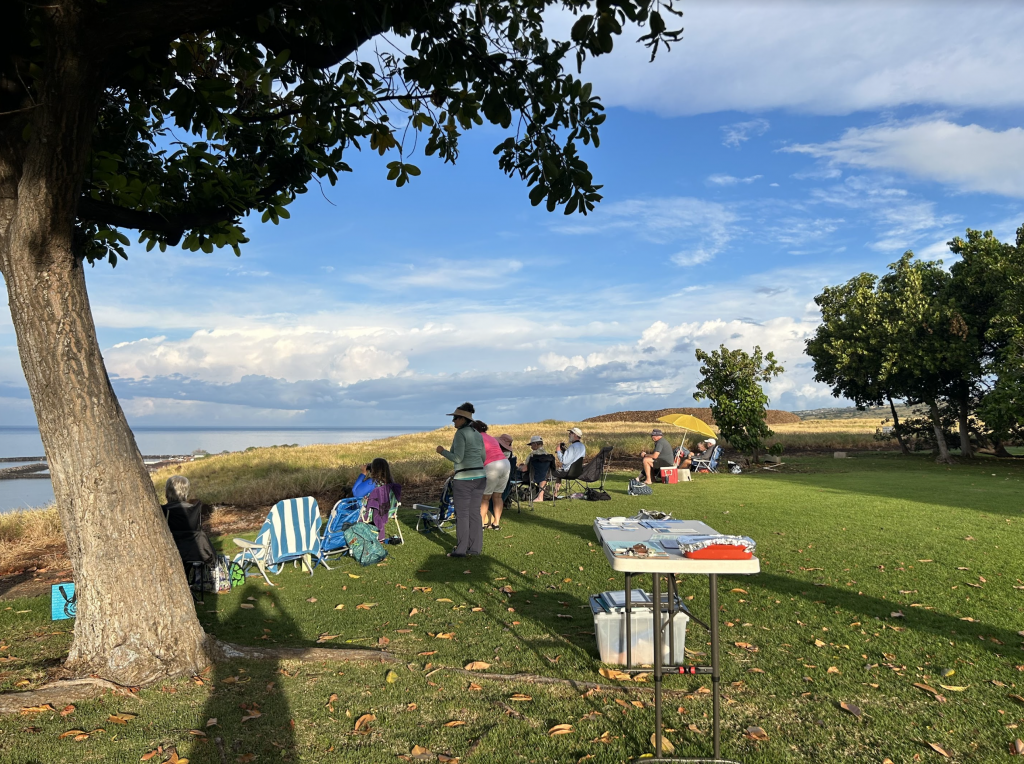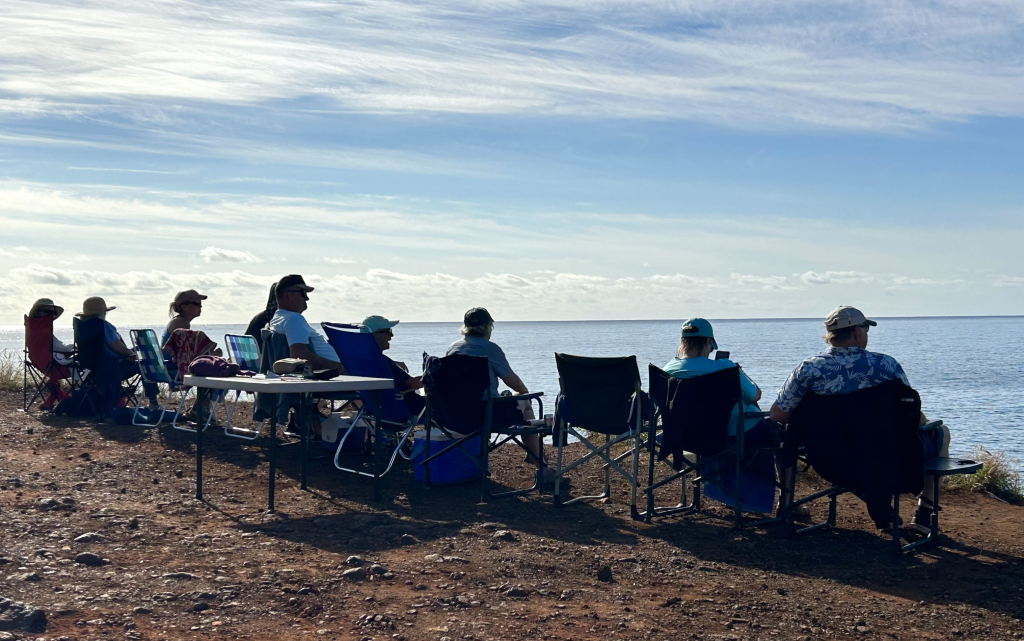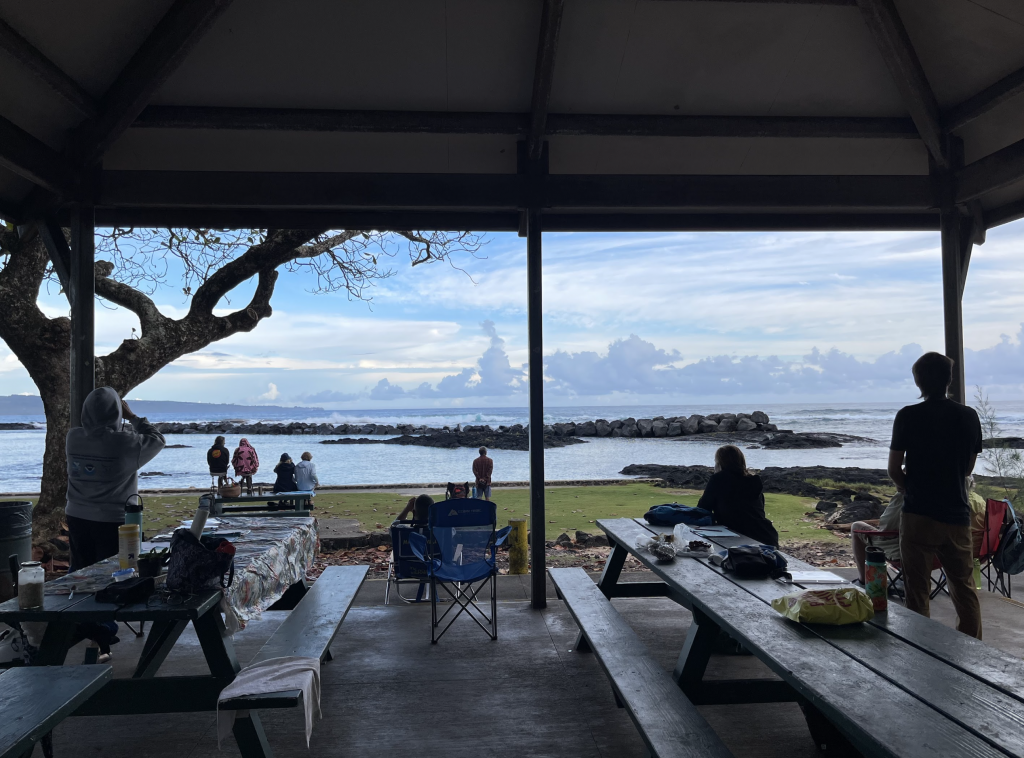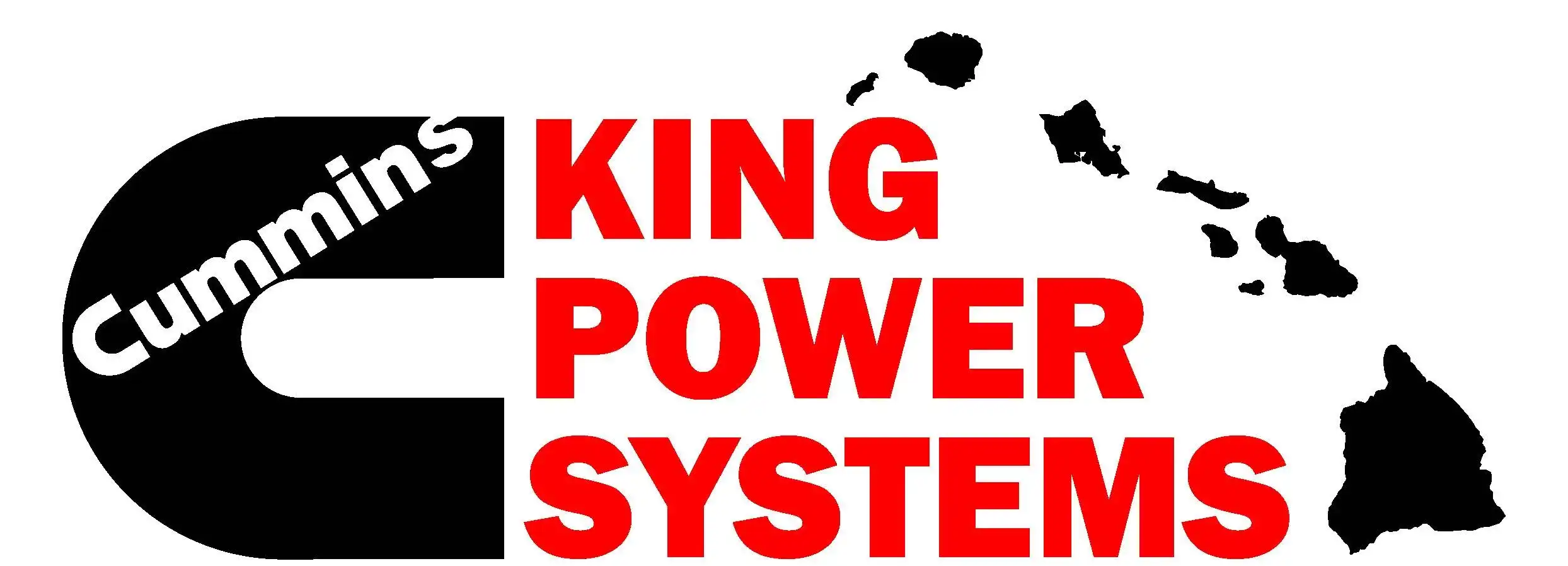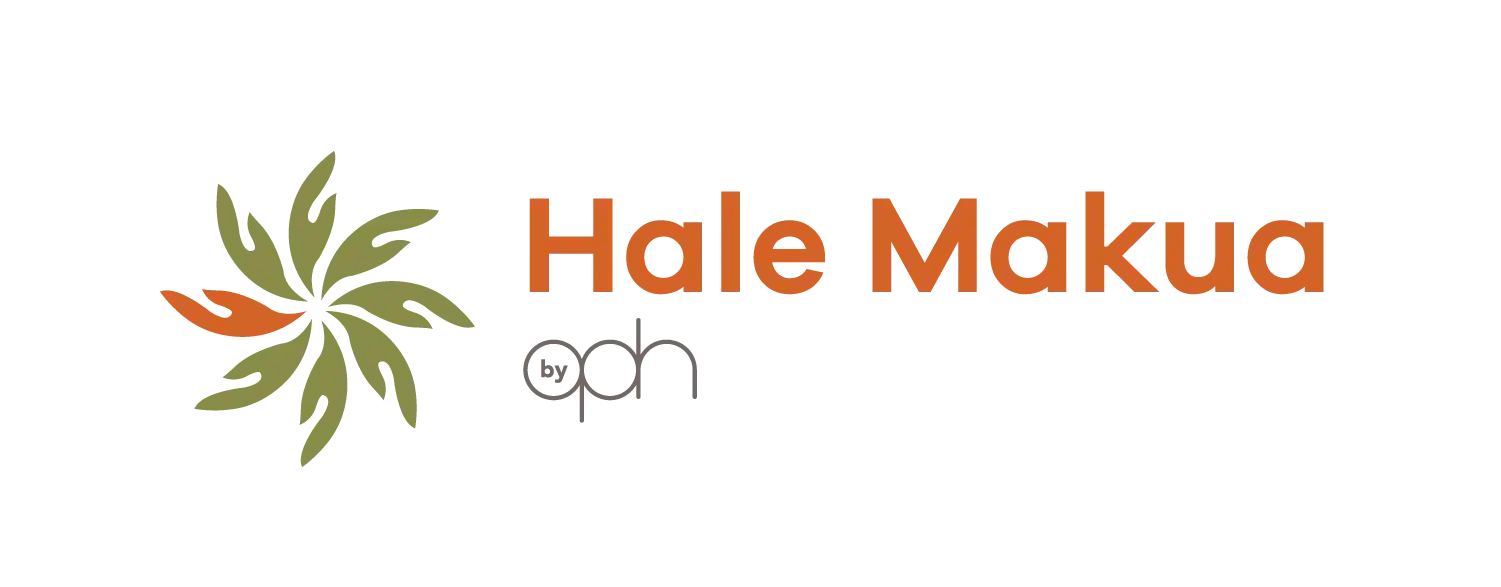Sanctuary Ocean Count and Great Whale Count commence for 2023 whale season
An estimated 264 volunteers gathered data from the shores of Kaua‘i, O‘ahu and Hawai‘i islands during the Hawaiian Islands Humpback Whale National Marine Sanctuary Ocean Count, the first of three coordinated whale counts in 2023.
On Maui, the Great Whale Count by Pacific Whale Foundation was only able to report from one of 12 designated sites due to ongoing heavy rain. Rain and storms across the state also impacted several Ocean Count sites, causing poor visibility or ending the count early. Precautionary measures were taken to ensure the safety of volunteers and site leaders.
Volunteers collected data from 30 sites across the main Hawaiian Islands on Jan. 28. A total of 83 whales were observed during the 9-9:15 a.m. time period, the most of any time period throughout the day’s count.
On the islands of Kaua‘i, O‘ahu, and Hawai‘i, Ocean Count volunteers collected data from 29 sites; a total of 75 whales were observed during the 9-9:15 a.m. time period, the most of any time period throughout the day’s count.
The single Great Whale Count site on Maui was able to report 41 whales. A total of nine whales were observed during the 10-10:15 a.m. time period, the most of any time period throughout the day’s count.
On Kaua‘i, the total number of whales observed during the day’s count was 94, on O‘ahu, the total was 246, and Hawai‘i 206. The total number for the single Great Whale Count site on Maui was 41, for a grand total of 587 throughout the state. This number may represent duplicate sightings of the same whale by different observers or at different time periods or different locations throughout the day.
Data collected during the Sanctuary Ocean Count and Great Whale Count combined with other research efforts can help reveal trends in humpback whale occurrence within and amongst whale seasons.
Across the main Hawaiian Islands, weather conditions were not ideal and made it difficult for observing whales from the shoreline due to poor visibility caused by rain and strong winds. A variety of other species were also spotted during the count including honu (green sea turtles), naiʻa (spinner dolphins) and multiple seabird species such as ʻiwa (great frigatebird), mōlī (Laysan albatross), kōlea (Pacific golden plover), ʻuaʻu kani (wedge-tailed shearwater), koaʻe kea (white-tailed tropicbird) and more.
Ocean Count promotes public awareness about humpback whales, Hawaiian Islands Humpback Whale National Marine Sanctuary, and shore-based whale watching opportunities. Site leaders tally humpback whale sightings and document the animals’ surface behavior during the survey, which provides a snapshot of humpback whales’ activity from the shorelines of Kaua‘i, Oʻahu, and Hawai‘i islands. Ocean Count is supported by the National Marine Sanctuary Foundation.
The Great Whale Count by Pacific Whale Foundation had site leaders count whales from shore as part of a long-term survey of humpback whales in Hawai’i, with survey sites along the shoreline of Maui. This event provides a snapshot of trends in relative abundance of whales and is one of the world’s longest-running community science projects.
Both counts take place three times during peak whale season annually on the last Saturday in January, February, and March.
Hawaiian Islands Humpback Whale National Marine Sanctuary, administered by NOAA’s Office of National Marine Sanctuaries and the State of Hawai‘i Division of Aquatic Resources, protects humpback whales and their habitat in Hawaiian waters where they migrate each winter to mate, calve, and nurse their young.





